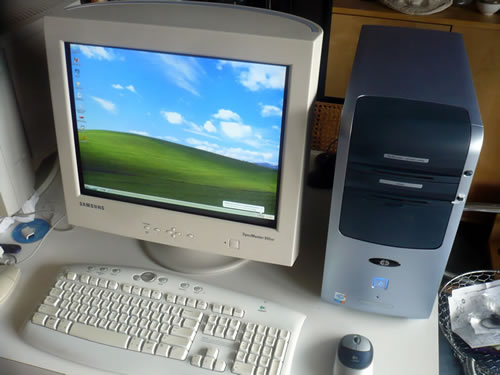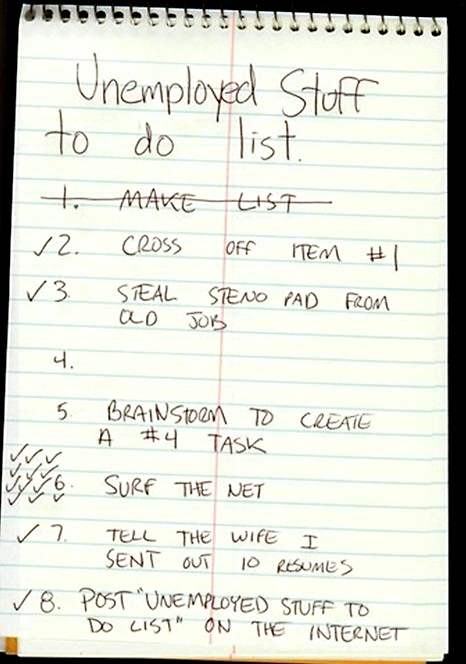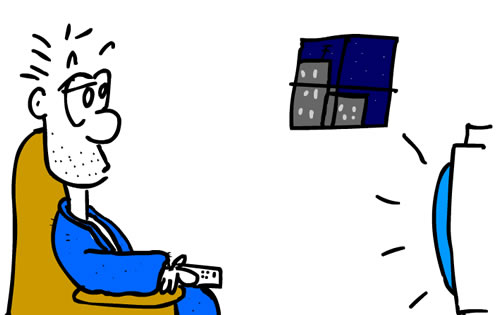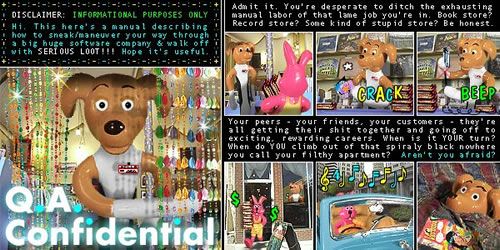
The blog’s new look is just the tip of the iceberg: big changes are in store for both Global Nerdy and its author, Yours Truly. It’ll all be made clear in a post tomorrow, which will include an update on my employment situation.

The blog’s new look is just the tip of the iceberg: big changes are in store for both Global Nerdy and its author, Yours Truly. It’ll all be made clear in a post tomorrow, which will include an update on my employment situation.

Purported Windows 7 screenshot, taken from MegaLeecher.net.
More will be revealed at the upcoming PDC (Professional Developers Conference) and WinHEC (Windows Hardware Engineering Conference), but for now, we know the name of the next version of Windows: Windows 7. The only other hint that Mike Nash drops in his post on the Vista team blog is that the goal for this version is to:
“stay firmly rooted in our aspirations for Windows Vista, while evolving and refining the substantial investments in platform technology in Windows Vista into the next generation of Windows.”
which I interpret as: “It’ll be the Vista we should’ve made.” For their sake, I hope so.
As for the name, it may not be as aspirational or inspirational as “Vista”, but it’s probably a good idea for Microsoft to adopt an “under-promise and over-deliver” strategy.
One of the best ways to pull yourself up from a fall is to pull others up along with you. That’s why I’m giving away some old computers that have been gathering dust chez moi rather than selling them. The few hundred dollars I’d get by selling them are far outweighed by the good that getting them into the hands of people who really need those machines.
Here’s the latest computer in the Great Give-Away: a Pentium IV desktop with 19″ monitor:

I picked it up in 2004 at Factory Direct: it’s a refurbished HP whose model number is unknown (Factory Direct likes to remove identifying markings from refurbs). My best guess, after doing some poking around is that it’s a Pavilion a375. Here are its specs:
The monitor is a Samsung SyncMaster 955DF, a decent 19″ CRT monitor. It may be big and bulky, but it does a decent job displaying graphics, and it’s free!

The computer’s got some niceties, including these front-panel jacks for audio, FireWire and USB and media card slots:

There’s a brand-new power supply installed in the machine, but in order to accomodate the power requirements of the video card, something had to give. While the 3.5″ floppy drive is functional, it isn’t connected to the power.
That’s right — I’m giving it away this system to someone who really needs it. If you are someone who needs a free computer or know someone who does, tell me the story at joey@globalnerdy.com. I’d prefer it if you were in the Toronto area (just because it makes things easier). I’ll give the computer to the person or organization whom I deem needs it most.

Since getting laid off, I’ve been getting a little less exercise. My bike commute to work, a 14-kilometre (8.7 mile) round trip, is gone. I also haven’t been going to the gym as often, even with the extra free time. I’ve lost five pounds since getting called into my layoff meeting two weeks and two days ago, in spite of the reduced exercise and some pretty big meals, including an anniversary dinner, Wendy’s birthday dinner and the farewell dinner b5 threw earlier this week. I needed to shed that weight anyway; I should make sure not to gain it back once I land a job.
Should you lose your job, your mileage may vary depending on how you respond to stress. I’ve been waking up about an hour earlier than normal to work on my career plans, research the companies who’ve shown an interest in me, and to do a little extra work on some blog entries. I also haven’t felt like eating as much, which comes from feeling twitchy about the situation. If your response to stress is to eat more or drink lots of beer (a.k.a. “liquid bread”), the change in your weight is likely to be the opposite of mine.
I guess the graphic makes it official: Apple will be announcing new notebook computers on Tuesday, October 14th at 10:00 a.m. Pacific (1:00 p.m. Eastern). I guess we’ll find out:
This should be interesting…
In the hope of triggering some “it always rains just after you wash your car” mojo, I thought I’d post the resume I’m handing out when applying for technical evangelist positions. Enjoy!
“Hey, dude!” said my pal on the phone yesterday. “I’m one of you!”
That was his way of telling me that along with about 1,000 other full-time employees of the well-known auction website for which he worked, he’d been laid off. But rather than calling to have a shoulder to cry on, he’d called to tell me about a plan he’d been working on and to ask me for my opinion. That’s one thing I have to say about a lot of high-tech people: the moment they lose a job, they start hustling.
It’s ironic: I’ve actually been busier unemployed than during the last couple of weeks of my employment. As a project manager in charge of projects that were either cancelled, on hiatus or managed by other people, I had precious little to do. As an unemployed job-seeker with a blog of some repute and reach, I’ve been very lucky: potential employers have been calling me, rather than the other way around. My days are pretty full doing legwork, research or interviews.
That doesn’t mean I still don’t enjoy the “loafing” gallows humour about the unemployed, such as this to-do list I found the other day:

One of the first things I did when I emerged from “the meeting” at b5 was to load up Odd Todd’s Laid Off: A Day in the Life, a classic from the last time I was last laid off by a dot-com. It’s still funny after all this time:

Click the image to see Laid Off: A Day in the Life.
And finally, if you have a lot of time to kill, here’s another classic from the era of the dot-com bubble burst: Leisuretown’s Q.A. Confidential, a comic made of ninety pages like the one shown below:

Page 2 from Q.A. Confidential.
Click the image to read the whole comic.